Glass collectors and admirers have likely heard of a company called Indiana Glass. Why is it such a popular name in the glassware community?
The Indiana Glass Company was a manufacturer that made popular glassware products for almost 100 years. Throughout its history, the company produced various styles of glass in accordance with changing trends. Currently, many of the Indiana Glass Company products are considered collectibles.
Any glass enthusiast should be familiar with Indiana Glass. Here’s everything you will want to understand about the manufacturer.
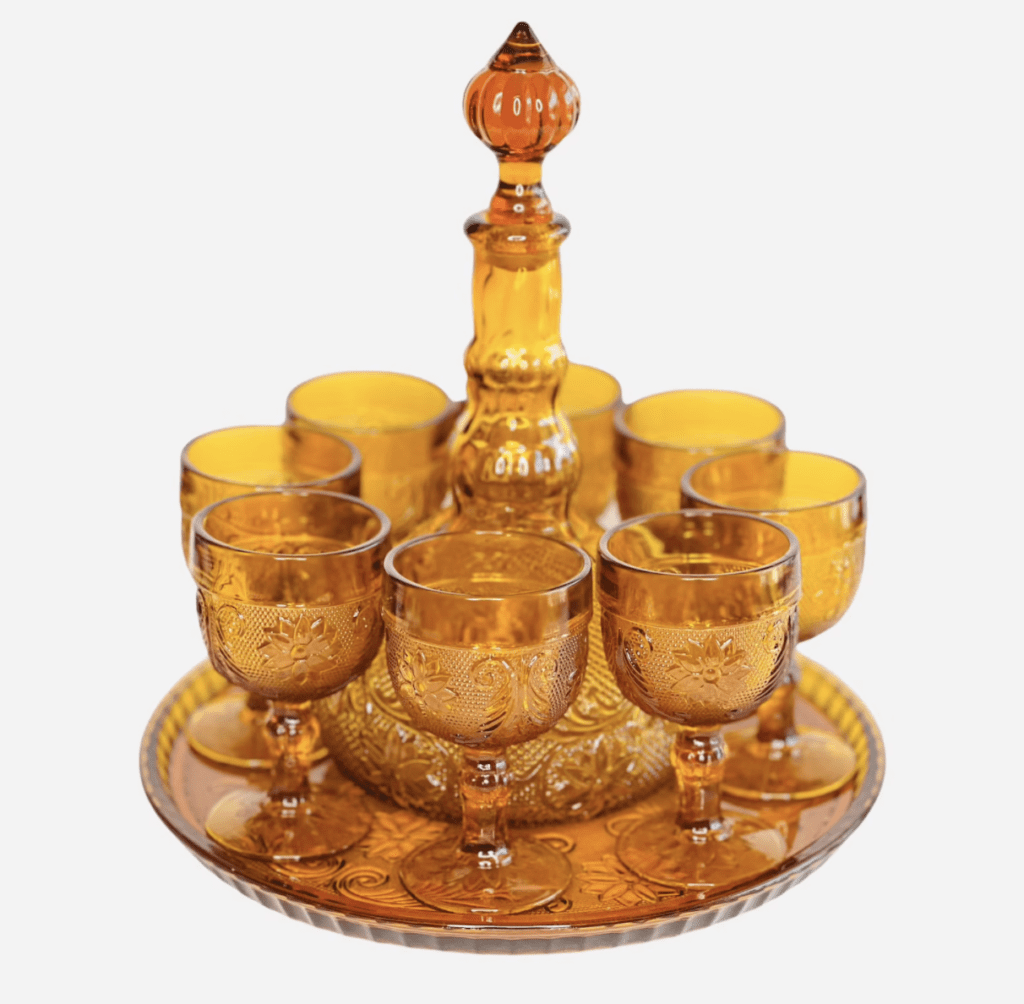
Indiana Glass Company History
The Indiana Glass Company was officially created in 1907. However, the companies roots begin a few years earlier. The business went through a few mergers and name changes, but “Indiana Glass” was introduced early and stuck throughout the test of time.
George Brady and James Beatty were integral to the beginnings of Indiana glass, although they were not part of the Company when it was given its name. The two businessmen purchased a building in Dunkirk, Indiana that was originally intended for railroad car repair work.
The building was quickly transitioned to function for glassware manufacturing, and the Beatty-Brady Glass Company was born. They bought the building in 1896 and for a few short years, they independently produced various pieces of glassware. Their most common items were lamps, vases, and chimney tops.
In 1899, the Beatty-Brady Company joined a collection of 19 different glassware manufacturers from that time called the National Glass Company. They did well as part of National Glass, being the top factory in the group. Based on inspection records, the name “Indiana Glass” for the Dunkirk factory was introduced sometime in 1904. However, this is not when the official change was made.
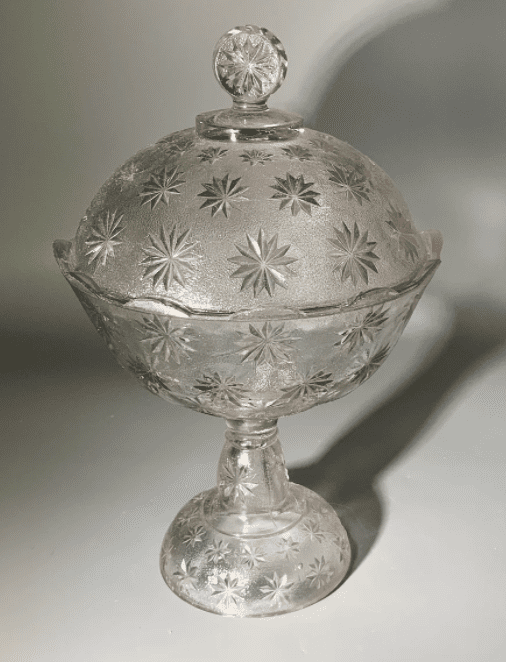
The Panic of 1907 was a short-lived financial crisis that affected a lot of companies in the United States, including National Glass. The company went under and became available for purchase. A group of six businessmen purchase the collection of factories in October, with Frank Merry as the president. Under new leadership, the group of factories was officially established as the Indiana Glass Company in late 1907. Merry would remain president for 24 years.
The next big change for the company came in 1957 when they were purchased by the Lancaster Glass Corporation. As part of the Lancaster Corporation, Indiana Glass was still able to keep its name and was considered a “subsidiary” of the larger entity. Pieces sold after 1957 are still considered Indiana Glass, just like the pieces from before the purchase. Lancaster purchased various glass companies but they largely retained their own individual identities.
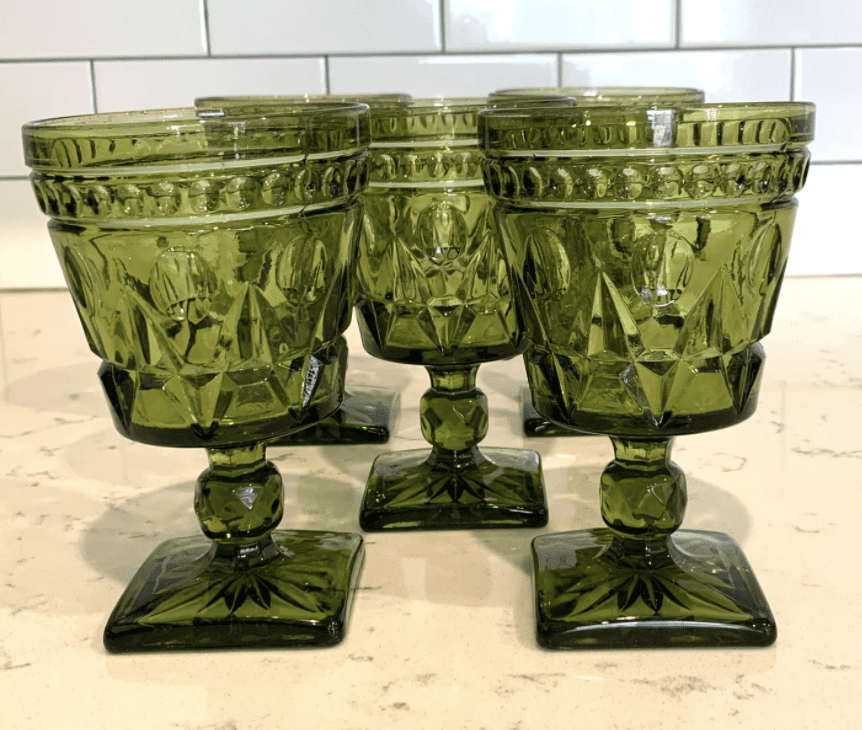
There were a few different factors that combined to result in the end of the Indiana Glass Company. First, in 1992 the Lancaster Colony was incorporated in Ohio, which began to slow things down for Dunkirk. In 1988, Lancaster ended one of their most popular and lucrative lines of glassware. A few years later, in late 2001, there was a 97-day glass-worker strike. Things went back to normal in 2002, but only for a few months.
November 2002 marked the end of the Dunkirk, Indiana factory which most people consider to be the end of the Indiana Glass Company as well. “Indiana Glass” was still produced in a factory in Oklahoma until it also closed in 2008, but the original Indiana glass was shut down years earlier.
What Type of Glass Did the Indiana Glass Company Make?
The types and styles of glass that Indiana glass manufactured changed greatly over time, but generally followed popular glassware trends as they arose. At different points in company history, Indiana glass produced pressed, painted, and blown pieces.
Pressed was by far the most common style because it lends well to cheap mass production. Pressed glass is typically much more profitable than blown. Indiana Glass did produce blown pieces as well, but not quite as much inventory.

The Indiana Glass’s version of painted glass is usually called Goofus glass. The paint was unfired and not very durable, meaning that it was typically used for very decorative pieces and was not very functional.
Practically any style of glass that was popular in the 1900s was also produced by Indiana Glass. They were and are a huge name in the glass world and didn’t miss out on any significant glassware trends. The Indiana Glass collection includes Goofus glass, depression glass, carnival glass, uranium glass, and milk glass, among other styles.
Indiana Glass Company and Goofus Glass
Goofus glass would have been popular at the beginning of Indiana Glass’s lifetime. Indiana Glass was likely the biggest and longest producer of this style. Goofus glass is any glassware piece that has had paint applied, but not fired. This could be pressed pieced or mold-blown pieces. Typically, the paint was applied to clear glass, but it was also seen on milk glass pieces and various colored glass.

Goofus glass certainly looks impressive, especially since red and gold were the most common paint colors. However, looks can be deceiving. Since the paint was not fired like enamel glass would be, the paint easily chips off. The pieces are “cold painted” and never see any sealing or enameling of the paint. After a couple of uses and washes, Goofus glass will begin to flake. This makes it better suited for decorative pieces that only need an occasional dusting rather than dishes that would have to be washed often.
The advantage of this flaky glassware was definitely the price point. It was much cheaper to skip a second firing process and leave the paint impermanent. The Indiana Glass Company could produce these ornate-looking pieces at a low price point, allowing more people to buy. This advantaged both the vendor and the customer, they just had to be a little more careful with those pieces.
Indiana Glass Company and Depression Glass
In the 20s and 30s, Indiana Glass produced a ton of Depression Glass, just like all of the other glass manufacturers during the Great Depression. With the economic crash, very few people were able to afford luxury materials like crystal and porcelain. Depression Glass was a cheaper alternative that still looked the part.
Depression Glass is pressed glassware in either clear or some translucent color. The Indiana Glass Company produced depression glass in a variety of colors and patterns. Blue, green, pink, and orange were some of the most popular colors sold. Indiana Glass’s “avocado” line of depression glass was incredibly successful. This was a green depression glassware set decorated with pears and leaves.
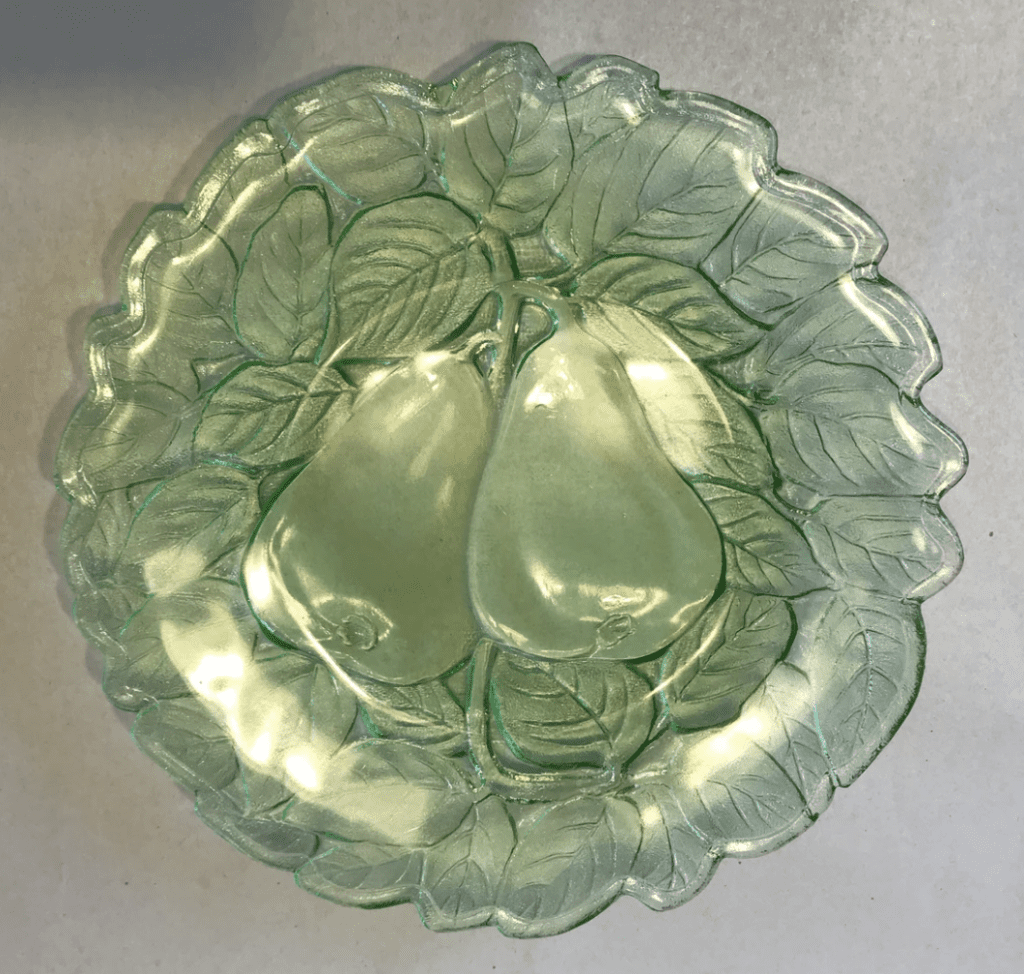
Around the same time frame, the Indiana Glass Company also made something called milk glass to imitate porcelain. Instead of being translucent like crystal, these pieces were milky white instead. This was a much cheaper alternative to the porcelain of the upper class.
Indiana Glass Company and Uranium Glass
One of the colors commonly seen in depression glass is yellow-green. This color is produced by adding uranium to color the glass. Since the look is created by uranium, these yellow-green depression glass pieces are commonly called uranium glass. Uranium glass glows neon green when exposed to a black light as a result of the additives.
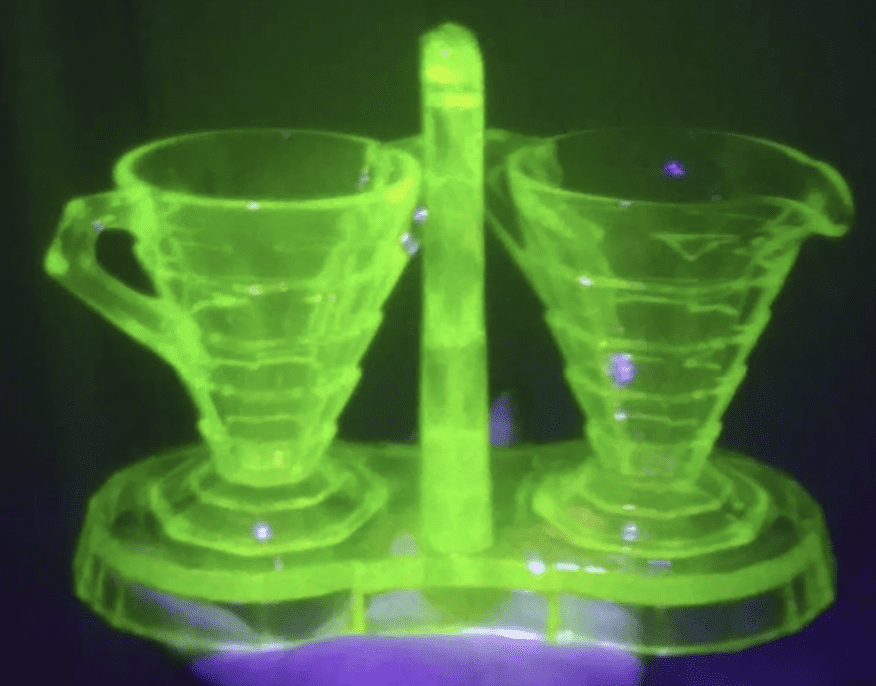
Indiana Glass was one of the many glass manufacturers that used uranium to achieve almost vaseline-colored pieces. This technique was popular during the production of depression glass but ended after World War II began. All uranium was used by the government during the war, forcing glassmakers to look elsewhere to make glass green,
Indiana Glass Company and carnival glass
Carnival glass is pressed glass that has been sprayed and retired with an iridescent coating. This coating is made out of metallic salts and produces a sort of “oil-spill” appearance on the surface of the piece, no matter what color is underneath. Purple, blue, green, brown, and red were all fairly common bases for carnival glass. The base color can still be easily detected under the iridescent highlights by simply moving the piece to change the angle of the lighting.
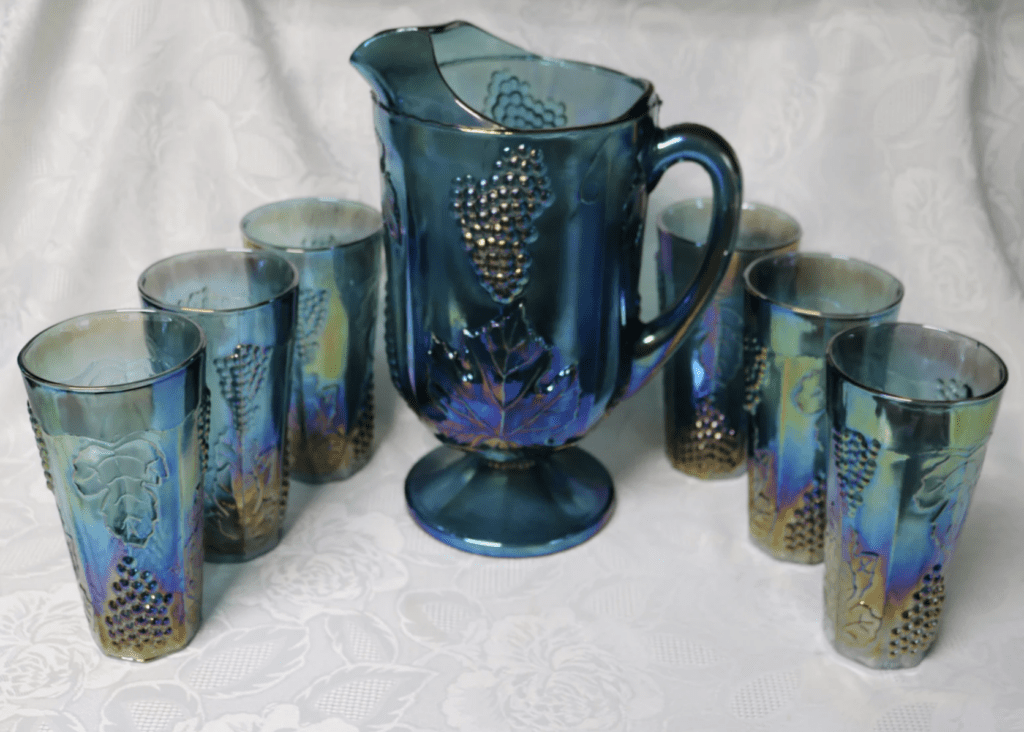
It was also popular to put the carnival glass coating on milk glass pieces. Creating rainbow metallic highlights on white glass created a look very similar to an opal. Probably the most popular base for carnival glass was a deep yellow/orange color called marigold.
Carnival glass went through two different periods of popularity, in the 1910s and 20s and then again in the 1970s. The Indiana Glass Company was a big producer during the second surge, responsible for a lot of the “new” carnival glass. One of the classic carnival glass pieces from the Indiana Glass Company is their “Hen on Nest. This was a platter and lid set where the lid was shaped like a sitting hen.
Popular Patterns
Between the 1970s and their eventual closing, Indiana Glass produced a selection of patterns, with Lotus Blossom, Pebble Leaf, and Canterbury Baskets among the most popular.
One of the most recognizable patterns from contemporary Indiana Glass is their Diamond Point. A series of interlocking pyramidal rhombus’, or diamonds, make an exciting texture in a band around the piece. The iconic diamond point piece is a clear glass goblet with a diamond point band around the bottom half of the cup and again on the center of the stem.

Diamond point is typically seen on clear glass, but older pieces are sometimes an orangey-brown color. Indiana Glass produced the diamond point pattern in the 60s, 70s, and 80s. Various pieces of drinkware were a popular application, but diamond point can also be found on plates, bowls, and coffee service sets.
From their earlier depression glass days, some popular patterns included Avocado, Bananas, Pineapple and Floral, and Old English. Going back even earlier to their opening years, Brid and Strawberry, Darling Grape, and Shooting Star were all popular patterns used by the Indiana Glass Company in the early 1900s.
The Tiara line
In the 70s-90s, Indiana Glass has something called the “Tiara” line. The pieces and patterns that were part of this line were sold through home parties very similar to Tupperware or Pampered Chef parties. Indiana Glass took advantage of the surge in popularity for at-home marketing parties.
People could buy stock from Indiana Glass and then sell it to their family and friends at parties they hosted specifically to showcase the glassware. The line included very specific patterns, most of them being reproductions.

As the popularity of these parties died down, Indiana Glass has to shut down the Tiara line. This is one of the early factors that eventually led to the end of the Indiana Glass Company. These dishes were also called “Sandwich Glass”, and the pattern is very similar to Anchor Hocking’s Sandwich Glass pattern.
Safety and Usage
The safety for consumption and care instructions for Indiana Glass will vary depending on what type of glass it is and how long ago it was made. However, with vintage glassware, it is hard to be too careful. Especially if you have glassware as a part of a collection, be very cautious in how you use the pieces.
Indiana Goofus glass should be handled as carefully as possible. Ideally, it will never get so dirty that it really needs to be scrubbed, but definitely opt for handwashing over putting it in the dishwasher. Goofus glass shouldn’t ever be used for serving or eating food, since the paint is unsealed and potentially dangerous when consumed.
Unpainted Indiana Glass would likely survive the dishwasher. However, the best way to care for your vintage pieces would be to hand wash them every time. It is a lot more gentle and you will avoid any mishaps that can occur behind a closed dishwasher door. In your careful hands, the pieces are much less likely to get chipped or broken.
Different styles and colors of Indiana glass have different additives and may contain uranium, lead, or even arsenic. Carnival glass will certainly have various metal salt compounds directly on the surface of the piece. The harmful materials are in very small quantities, and the pieces are likely still safe to eat off of, but we recommend erring on the side of caution and only use your Indiana Glass Company pieces for decoration.

